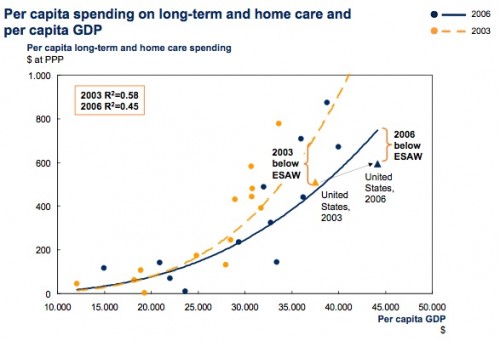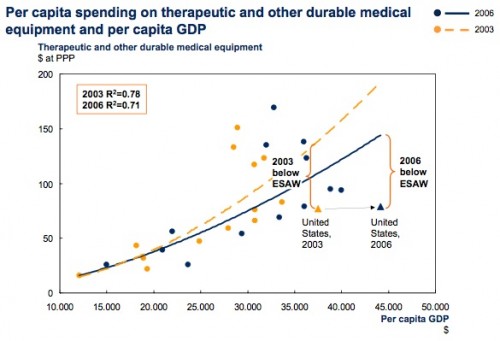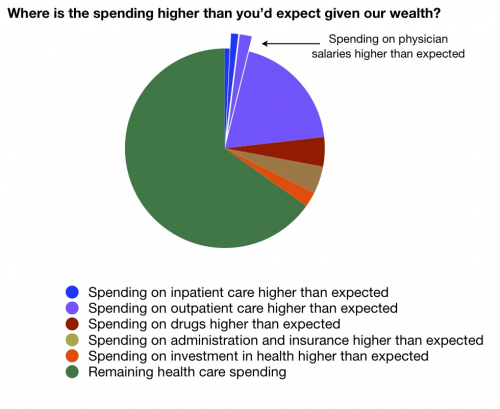If you haven’t read the introduction, go back and read it now. That introductory post also includes links to all the posts in this series on what makes our health care system so expensive. Each of these pieces is going to discuss one of the components of unexpected spending that accounts for why our system is so expensive.
Remember, these posts are going to follow a common theme. I am going to highlight how the United States is spending more than you’d expect given our wealth. Much of this comes from the McKinsey & Company study, Accounting for the cost of health care in the United States.
Some of you may be confused. We’re spending so much more than we likely should be on health care that it might be hard to accept the idea that there are areas that we really need to spend more. But those areas exist. As I’ve said before, we’re not spending wisely.
The largest area of underspending is in long term care or home care. Long term care is usually provided by nursing home; home care is provided by home health agencies that employ providers to go into homes. And, based on our wealth, we spend $53 billion less than you would expect us to:
 Some of this can be explained by the fact that the people in the United States are, on average, younger than most other countries. So some of the lower spending is totally rational. If we have fewer elderly people, than we should have less people consuming long term and home care. When you factor in the age of the US population, that explains more than 40% of the underspending.
Some of this can be explained by the fact that the people in the United States are, on average, younger than most other countries. So some of the lower spending is totally rational. If we have fewer elderly people, than we should have less people consuming long term and home care. When you factor in the age of the US population, that explains more than 40% of the underspending.
But that still leaves us spending $36 billion less than you might expect given our wealth. And it’s not because long term care and home care don’t do any good. In most countries, such care is part of the basic coverage of insurance. In the United States, though, that’s not so. Most private insurance plans do not cover such care, and even Medicare covers only temporary stays as step-down care after discharge from the hospital. While Medicaid, interestingly, does cover a fair amount of such care, the vast majority of individuals don’t qualify for Medicaid.
That means that, until people are poor enough to get Medicaid, they have to pay for long term care or home care out of pocket. It should surprise no one that this means people spend less than if it was covered. Moreover, we consume more home care than long term care, because home care is cheaper.
The second area of underspending is for durable medical equipment. This category includes contacts and eyeglasses, wheelchairs, rented medical equipment, and surgical or orthopedic products. Our spending in this category, which was $24 billion in 2006, was $19 billion less than you’d expect given our wealth:
 As with the long term and home care, this is likely due to the fact that insurance coverage for many of these products is skimpy, if it exists at all. For instance, relatively few plans will cover eyeglasses in the United States, especially compared to other countries.
As with the long term and home care, this is likely due to the fact that insurance coverage for many of these products is skimpy, if it exists at all. For instance, relatively few plans will cover eyeglasses in the United States, especially compared to other countries.
In fact, in the United States, more than half of the money spent in this category is out-of-pocket. When people have to pay with their own money, they spend less. That’s not a surprise. Unfortunately, that doesn’t mean people don’t need corrective lenses or other products. It just means they choose not to get them.
Of course, in a series dedicated to the fact that we’re spending too much on health care, it’s hard to simultaneously make the case that we need to spend more. That doesn’t mean it’s not true.
No changes to the chart here. Just a reminder of where we are overspending.

